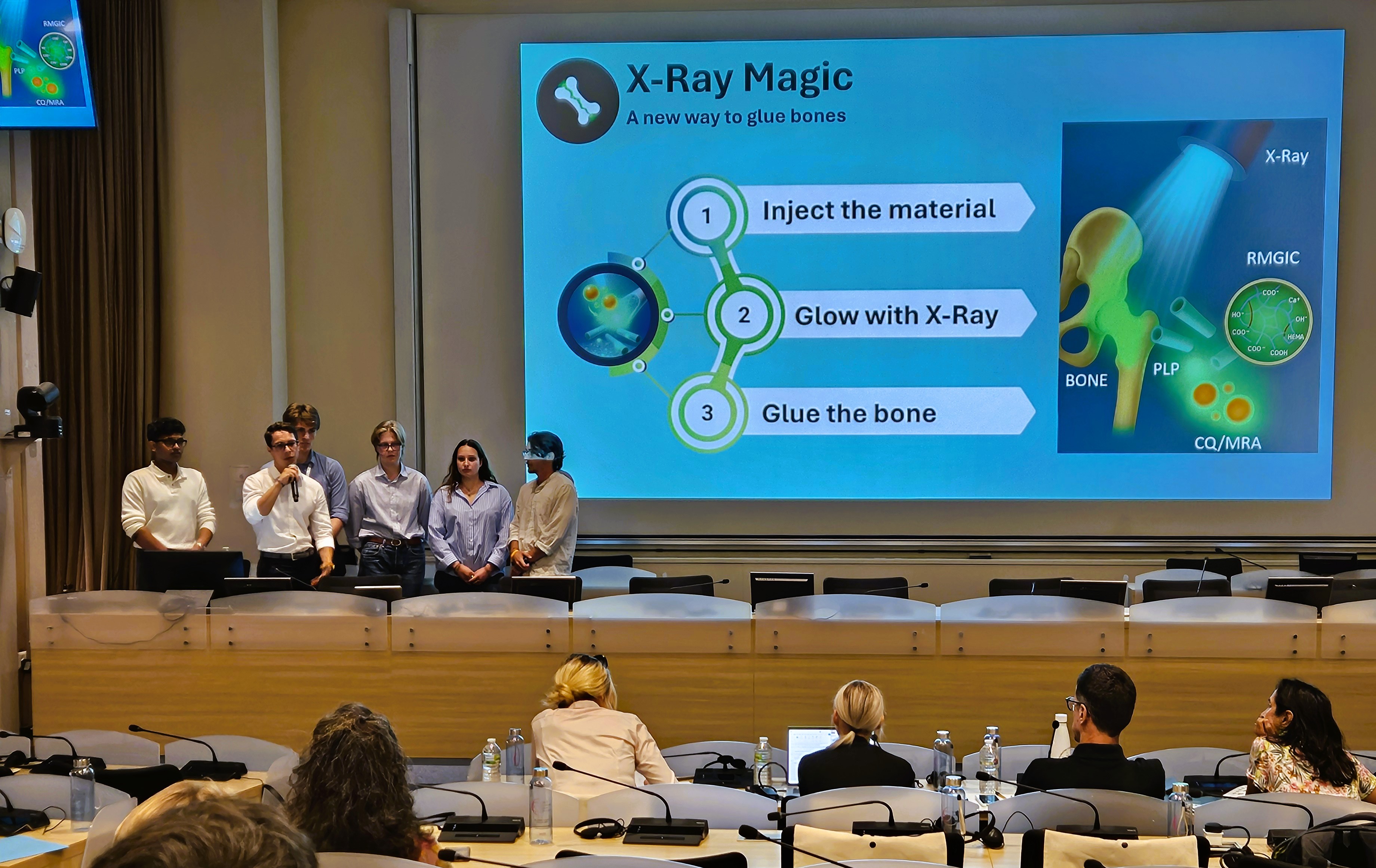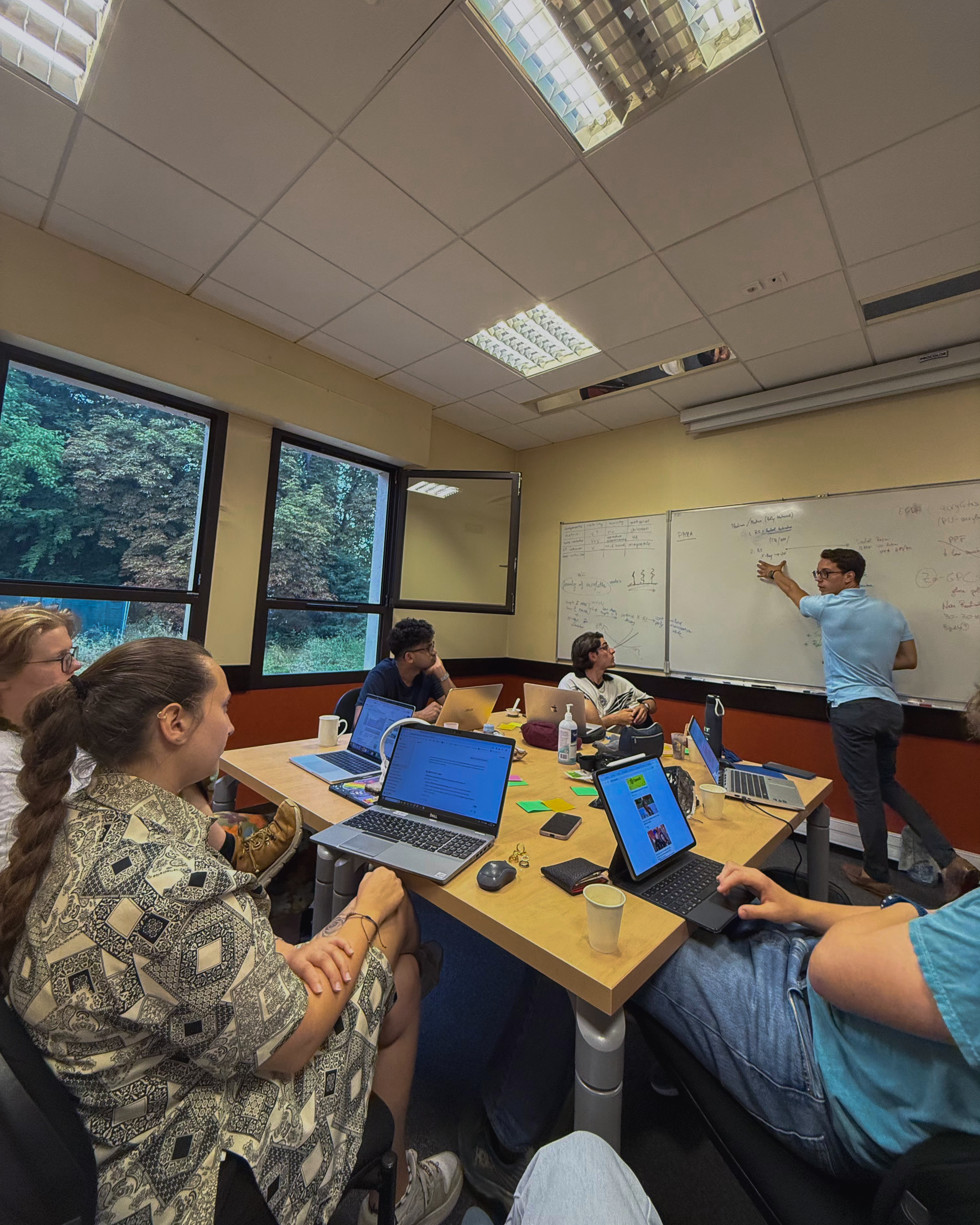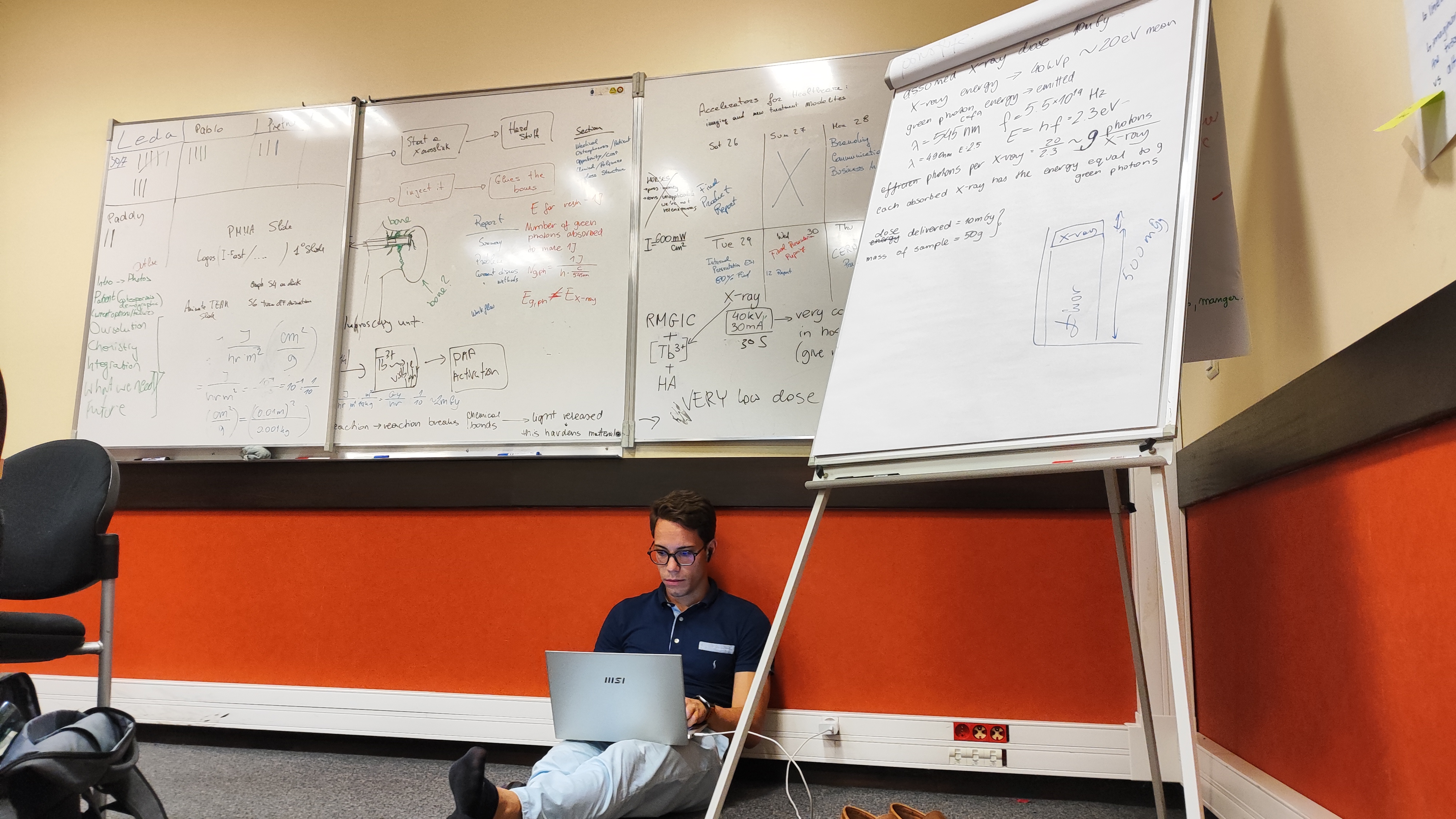
X-Ray MAGIC – CERN I.FAST Challenge
Ten-day sprint with The T.E.A.M. to imagine how particle accelerators can improve healt: we started from scratch, shaped the concept and delivered the final story in CERN’s Council Chamber.
Project dossier
- Title: I.Fast - CBI: Particle Accelerators for Human Health
- Tagline: Challenge based innovation
- Period: 22–31 July 2025
- Locations: European Scientific Institute (Archamps, France) · CERN (Geneva, Switzerland)
- Partners: I.FAST · European Scientific Institute · CERN
- Team: The T.E.A.M. — Terrific Experts in Accelerating Medicine
- Challenge focus: Explore How can particle accelerators help improving human health.
Contribution as catalyst
- Co-developed the X-Ray MAGIC concept, translating accelerator science into a viable medical application.
- Led facilitation rituals: decision-making, retrospectives, and alignment, for a multidisciplinary team.
- Kept a constant “So what?” lens to connect scientific feasibility with patient value and jury expectations.
- Tools used: Miro · Canva · Google Workspace · Agile frameworks · Lots of paper and marker · Infinite draw on whiteboards · Communication mapping.
- Working style: Systems thinking, design-driven facilitation, and rapid synthesis across disciplines.
Project story
From the moment I received the acceptance email, I knew this wasn’t going to be just another scientific workshop. Challenge-Based Innovation 2025 was an experiment in itself: ten days to rethink how particle accelerators could improve human health. The settings, the European Scientific Institute in Archamps, with the final presentation at CERN, was already a dream come true.
With an energetic collaborator and collegues we created The T.E.A.M., short for Terrific Experts in Accelerating Medicine. It began as a joke, but soon became an identity. We were an improbable mix of physicists, chemists, and biomedical researchers. By day three, the storming phase had hit: misunderstandings, technical gaps, and pressure. Yet somehow, that chaos became cohesion. My role wasn’t to manage, but to catalyze. Was to keep asking the question that guided our entire process: So what? What difference would this make for patients, surgeons, or the real world?
That question pushed us beyond theory. We explored materials, radiation mechanisms, and medical contexts until we found an elegant intersection: an injectable bone cement that could harden on demand under controlled X-ray exposure. The concept, named X-Ray MAGIC, combined bioactive materials with radioluminescent particles and a photoinitiator that trigger a reaction under X-rays. It was science fiction turned into plausible innovation.
The intensity of the sprint was unmatched: 12–14 hours a day, followin seminars, brainstorming, testing ideas, building mock-ups. The human side was what made it work. We trusted each other enough to disagree openly and move fast. Our “day off” in Annecy wasn’t rest; it was where we built the emotional glue that carried us through the final stretch.
The visit day at CERN was surreal. Walking through the tunnels, surrounded by coils, detectors, and decades of discovery, I realized how every past experiment in my own life, form the homemade cloud chambers to the garage prototypes, had led here. This wasn’t a tourist visit; it was a return to a childhood dream, now reframed through purpose.
Our pitch took place in the Council Chamber, the same hall where Nobel laureates have debated and decided the future of physics. I could feel the weight of that space, but also the energy of a team that had built something authentic. We didn’t win the challenge, but we were recognized for presenting the most feasible and impactful project. That sentence was enough: realistic in our vision, grounded in what mattered.
I left CERN with no trophy, but with something more enduring: perspective. I had seen how the smallest idea, when combined with the right people, can expand into something greater. I had seen that innovation is not a lightning strike but a human chain reaction.
And perhaps most importantly, I had rediscovered the thread connecting the boy who built experiments in the dark to the man who now builds opportunities for others to do the same.
Curiosity, after all, is the most powerful accelerator we have.
Gallery



